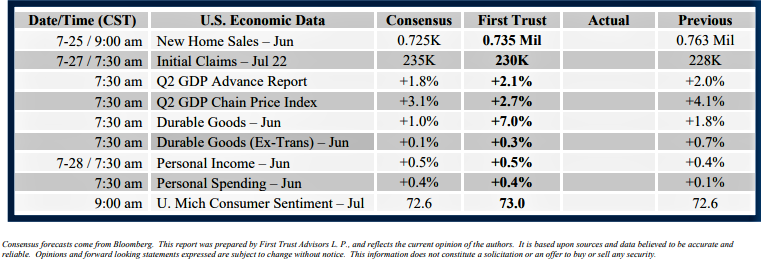Raymond James
Markets & Investing
Dealing with inflation and a bear market as you near retirement.
It’s hard to see your portfolio dip and not panic – especially as you near retirement. Coupled with record inflation, a dip might tempt you to sell your investments to drive cash flow. But long-term thinking even when nearing retirement is the key to preventing portfolio erosion, and to achieving much more.
Avoid this pitfall by taking a holistic approach to your finances and enlisting help from your advisor. Here are some dos and don’ts for dealing with inflation and a bear market as you near retirement.
Do get a clear picture of where you stand. First and foremost, it’s important to tune out the panic-inducing headlines and revisit your personal situation and current position. This is best done with your advisor, who can hear your concerns and offer a level-headed approach and make necessary adjustments if needed.
Don’t bail out at the bottom of a dip. Realize selling everything now would cement a loss and wouldn’t allow you the opportunity to recover when the market picks back up again. While there may be some instances where it makes sense to cut your losses (probably fewer than you think), this should not be a widespread strategy in a downturn.
Do consider using cash from other sources if you’re able. It’s wise to have cash to cover up to 12 months of expenses in retirement, and while this doesn’t always provide enough time for your portfolio to fully bounce back, it provides a cushion and gives you time to determine the best next steps. One strategy involves selling less volatile bonds in order to generate cash, even though it might seem counterintuitive. It will buy time for more active investments to come back.
Don’t write off working a little longer. Whether full-time or part-time, working longer can give your investments time to recover. (Bonus: Working part-time may make for an easier emotional transition into retirement.) If you’re already retired, going back to work might not sound so appealing. Instead, consider reducing expenses and sticking to a stricter budget for now.
Do speak to your advisor about your concerns. Trust the relationship you’ve built with your advisor. They have your best interest at heart. You may consider rebalancing your portfolio a bit, but only after taking a holistic look and conducting your due diligence. Remember, you diversified accordingly as you were saving for retirement, and while the market has shifted, you don’t need to overhaul your portfolio to account for these changes.
Take your emotions out of the equation when it comes to investment decisions in a fluctuating market. This will help you fare better as you near your retirement date. A long-term lens will keep market ups and downs in perspective and let you focus on the exciting time retirement should be.
If you’re retiring in this market,
Avoid making any emotional, rash decisions regarding your investments
Discuss concerns with your advisor, who can make recommendations based on your situation
Past performance may not be indicative of future results. There is no assurance any investment strategy will be successful. Investing involves risk including the possible loss of capital. Diversification does not guarantee a profit nor protect against loss. The process of rebalancing may result in tax consequences.
Sources: cnbc.com; cnbc.com; fidelity.com; nytimes.com; assetmark.com; nerdwallet.com; forbes.com





















